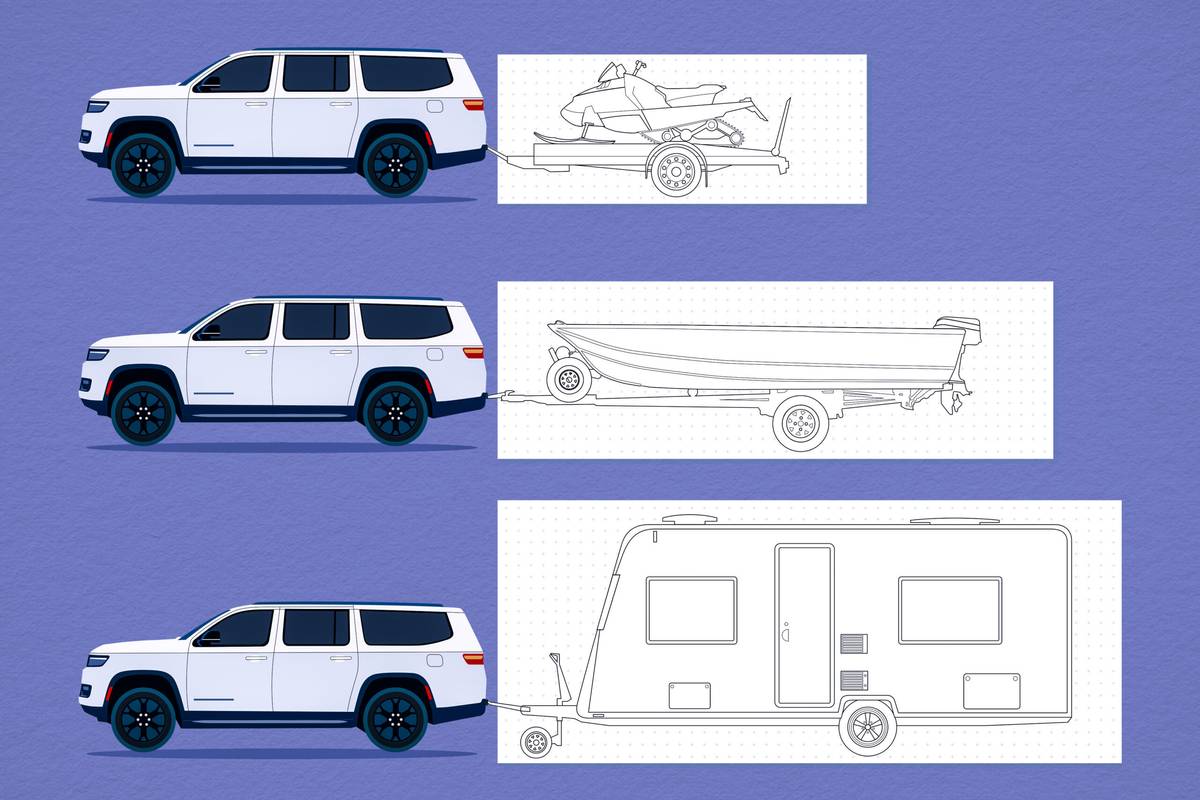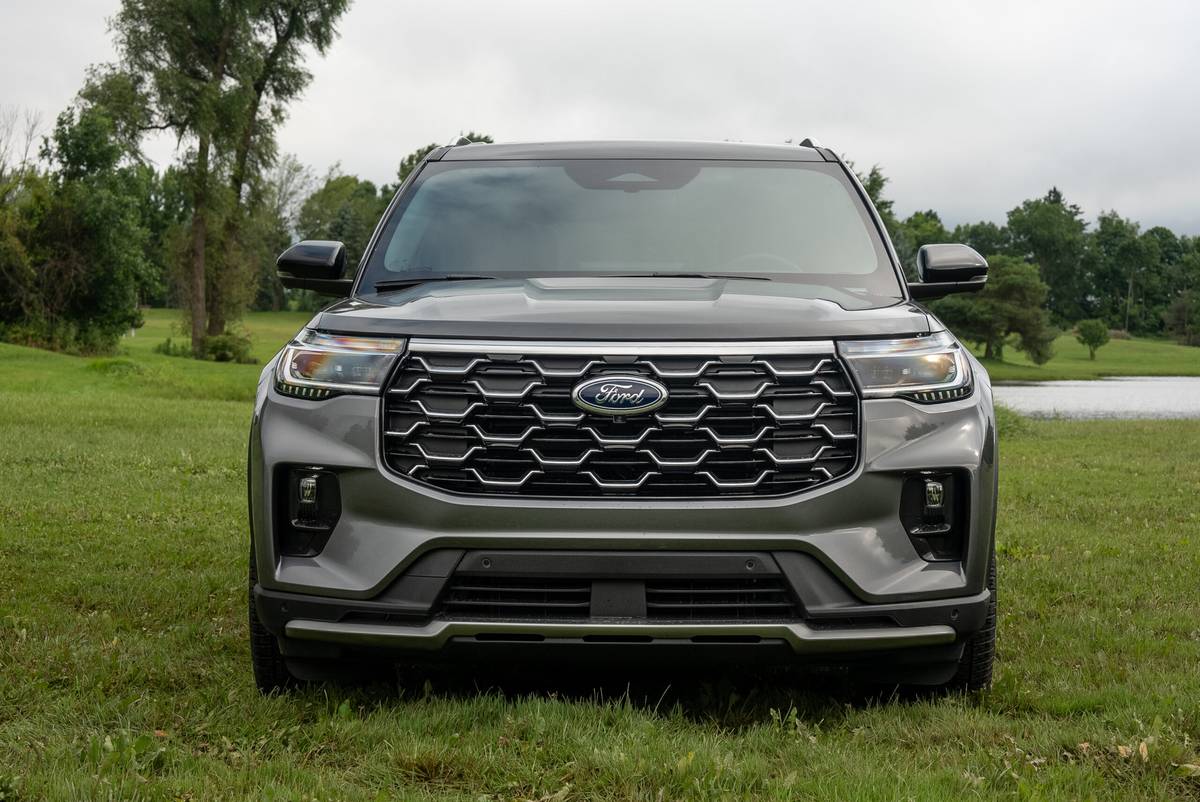2017 3/4-Ton Work Truck Challenge: How They Hauled
Heavy-duty, regular-cab, long-bed pickup trucks aren't big sellers among the general pickup populace. It's rare to find someone who even gives these plain-Jane work trucks a second glance when walking among the dozens of decked-out crew cabs on dealers' lots — that's if there's even a no-frill's regular-cab truck on the premises.
It's contractors and others in the building and construction trades who need a work mule — a cheap, efficient, bare-bones, heavy-duty, regular-cab V-8-powered truck that can go into the field every day to do the grunt work. Tasks such as hauling barrels of diesel, delivering a pallet of track chains and rollers, or hauling a bed full of mulch or sod require stout suspensions and lots of muscle under the hood while providing a modicum of comfort and convenience to the driver and passengers.
That was our mindset as we planned our 2017 3/4-Ton Work Truck Challenge, during which we put the Chevrolet Silverado 2500 WT, Ford Super Duty F-250 XL, Nissan Titan XD S and Ram 2500 Tradesman through a battery of tests in Phoenix. All were model-year 2017 pickups.
We drove the contenders on a 111-mile fuel-economy loop that took us through the greater Phoenix area via city streets and interstates during the middle of the week, just as a contractor or business owner would on a typical workday. We drove the first loop with the beds empty so we could get a good feel for them as commuter/delivery trucks. Then we rolled into a home improvement store and loaded each pickup's 8-foot bed with two 1,100-pound bags of sand to give us a good idea of how they handled the same driving conditions in work mode.
A 2,200-pound payload is rather light duty for a three-quarter-ton pickup. But to be fair across the board, that kept the pickup with the lightest cargo capacity — the four-wheel-drive Nissan — within 400 pounds of its maximum calculated payload of 2,620 pounds. The two-wheel-drive Chevy could have handled another 1,080 pounds before reaching its 3,280-pound capacity. The ton-plus of sand wasn't much of a strain on either the 2WD Ford's 3,970-pound capacity or that of the 2WD Ram's 4,200-pound payload capacity, the highest of the group.
Driving Empty
Ride quality may not have much bearing on the purchase of a work truck for many business owners. But it should. According to SAE International studies, the cabin environment has a direct effect on driver performance and fatigue levels. Basically, the worse the ride and comfort, the more tired the driver is going to be at the end of the shift.
Our four contenders proved that there's a direct relationship between payload capacity and ride quality: A higher payload means a stiffer ride. So, it was no surprise the Ram was by far the least favorite when it came to driving empty, with the Nissan being the one the judges would happily spend the most time in as a commuter vehicle.
All four of the work trucks kept the occupants fully aware of road surface conditions at all times. Broken pavement, railroad crossings, potholes, cracks and expansion joints were experienced with varying degrees of thuds, thumps and tremors welling up through the seat and radiating through the body as the stiff rear suspensions telegraphed every tire movement.
The Comfort of Weight
All that changed when we dropped those two industrial-size bags of sand on the floor of each bed. Nothing mellows out a three-quarter-ton work truck like loading up the rear suspension. The load also revealed how much (or little) was left in payload capacity, and how well the engines/transmissions were suited to such tasks.
For example, the Ram ($36,795 as tested) handled the 2,200 pounds with the grace of a power lifter. The rear suspension barely squatted when the bags were set down between the cab and rear axle. The ride, still on the firm side compared with the Nissan and Chevy, smoothed out; the interior noise levels dropped and all felt right behind the wheel. The engine and transmission — all trucks were slipped into Tow/Haul mode for this portion of the test — worked smoothly, with no gear hunting or feeling like there wasn't enough power to do whatever was needed. It was easy to see that the Ram could easily haul another 1,000 pounds of cargo with ease. The brakes and throttle feel were heavy. As for ergonomics, the Tradesman we tested was spartan, but it was definitely a strong work truck.
The Ford, with the second highest payload capacity at 3,970 pounds, felt similar to the Ram on some levels and far better on others. Although its suspension moved down a little more than that of the Ram, the load settled down the Ford's jittery unladen ride more so than the Ram. The load also brought to light the strength of the new, lightning-quick, fuel-friendly 6.2-liter V-8 and the smoothness of the six-speed automatic behind the new power plant. This was by far the sportiest of the work trucks, with the muscle to carry or tow whatever load needs to be moved quickly and efficiently. Visibility was excellent, from the nice towing mirrors to the view forward and over the shoulders. The XL also had a few more creature comforts than the Ram Tradesman and carried a $1,400 higher price tag at $38,220. Day in, day out, this package would be sweet in a fleet.
Chevrolet's Work Truck can carry about 1,000 pounds less than the Ram and 700 pounds less than the Ford, and its handling — loaded and unloaded — felt the nimblest of the four. What set the $37,040 WT apart from the others was that it was equipped with a backup camera and had an adjustable driver's seatback along with power mirrors, locks and windows. Such niceties help reduce driver fatigue and improve safety around job sites and in city traffic. The rear suspension could use better shocks, but it still handled the ton-plus payload easily. The 6.0-liter GM engine was noisier than the other V-8s under hard throttle, and the brakes with a load were a bit touchy. All in all, it was a well-equipped work truck that was more than up to the hauling task we devised.
Nissan wanted to build a pickup that fit in between half tons and three-quarter tons, and it hit that goal with the precision of a world-class archer in the XD. If you need a light-duty three-quarter ton or a heavy-duty half ton, the XD fits the bill. Unfortunately, when competing in a work truck comparison, being on the low end of the work specs isn't a good thing. The Nissan's 2,620-pound payload capacity was anemic compared with the others, and it was the heaviest of the group with a scale weight of 6,180 pounds. The 2,200 pounds of sand made the suspension feel like it was getting close to its limit with more body lean than the others, while the transmission made the engine feel sluggish to respond. Additionally, the transmission hunted more than the others with the load, too, so driving in morning traffic almost necessitated using the manual-shift mode, especially in the 30-to-40-mph range. On the positive side, the 4×4 XD would make a good daily driver/commuter work truck because the unladen ride was the best of the four we tested, and the Nissan V-8 delivered better fuel economy than either the Ram or Chevy. The brakes felt excellent, the steering was light and precise, and interior noise levels on city streets seemed the quietest of the lot.
Judges' Choice
When the test drives were over and final numbers were tallied, our judges looked at each pickup in the same light as a business owner would when choosing a work truck for his or her fleet. Load-carrying ability, along with fuel economy and ride quality, figured heavily in our scoring. Some work truck buyers might shift emphasis depending on the type of work they do, which showed up in how our expert judges voted.
In judges' scoring that evaluated the pickups across 10 subjective categories — bed features/access, interior layout, interior quality, interior comfort, how they hauled payload, how they rode empty, visibility, acceleration with payload, braking with payload and value — the Ford was the clear winner with 736 points, followed by the Nissan (695), the Chevy (694) and the Ram (634).
Cars.com photos by Angela Conners
Overview | Track Testing | Payload | | Dynamometer Testing | Results

Featured stories



